
26 minute read
Taipei Rising
Susie L Ma
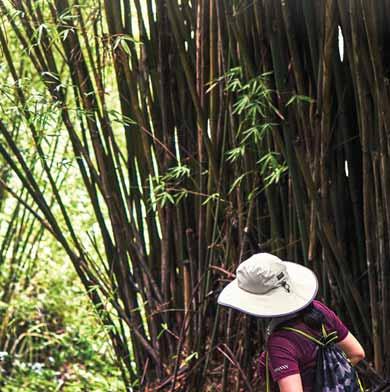
Advertisement
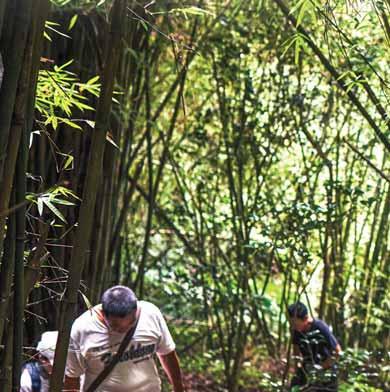
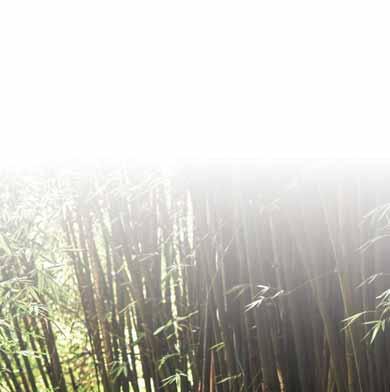
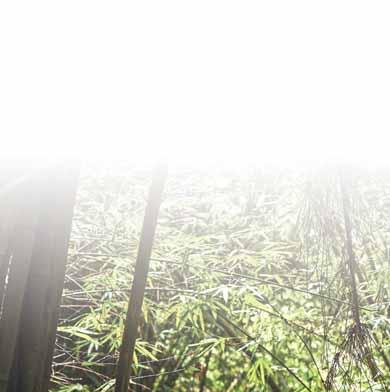
Sacred temples, cloud-busting skyscrapers, mountain getaways, incomparable food, and a dazzling nightlife: welcome to Taiwan’s dynamic capital city, home of the Rotary International Convention 2021.
It emerged from the ocean mists ean mists nearly 500 years ago, a lush o, a lush Asian isle covered in green in green forests and punctuated by tall ed by tall mountains. No matter that it er that it had a civilisation and a culture already e already centuries old. To the Portuguese rtuguese sailors exploring uncharted seas, it d seas, it was something entirely new, and it w, and it looked like a paradise. They gave hey gave it a name that soon began to appear o appear on mariners’ maps: Ilha Formosa — rmosa — beautiful island.
The name stuck, though the island he island of Formosa, about 100 miles east of s east of the coast of China, is known today as today as Taiwan. It is also considered one of d one of the Four Asian Tigers, a quartet of Far tet of Far East economies that took off in the late n the late 20th century and continue to expand o expand in the 21st. For Taiwan, the seat and seat and symbol of that miraculous growth is its owth is its capital, Taipei, a city that blazes 24x7 zes 24x7 with an inextinguishable vitality — tality — making it a perfect setting for the g for the Rotary International Convention 2021, ion 2021, whose theme is Feel the Energy.rgy.
This is a long-awaited moment moment for Taiwanese Rotarians, who estabho established their first club, the Rotary Club tary Club of Taipei, in 1948. Seventy-two years wo years later, Taiwan has nearly 900 clubs 00 clubs and about 35,000 Rotarians. Its 12 s. Its 12 districts will serve as hosts for the s for the 2021 convention from June 12 to 16. 12 to 16. “The Taiwanese Rotarians have been ave been preparing to put on this convention for ention for five years,” says Kenneth M Schuppert chuppert Jr, the convention chair. “They have a ey have a
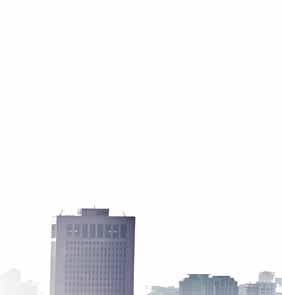


great deal of pride, and they’re intent on making the convention a showcase for their city and their country.”
A member of the Rotary Club of Decatur, Alabama, Schuppert served as the aide to past RI President Gary C K Huang, a member of the Rotary Club of Taipei since 1976. Schuppert and his wife, Lynn, a member of the Decatur club who served as the aide to Huang’s wife, Corinna, have visited Taipei several times. They are eager to return. “The city of Taipei is so interesting,” Schuppert says. “You’ve got all these modern buildings, with beautiful, ancient temples interspersed among them.” He extols the city’s vibrancy (as epitomised by its night markets), its cleanliness, and its many natural wonders, from its “pocket parks” to its nearby mountain trails.
Schuppert also raves about the food — and in doing so, he’s far from alone among visitors to Taiwan. Even the simplest meal is an occasion — a time for friends, old and new, to enjoy one another’s company and the island’s varied cuisine. Schuppert has some advice for Rotarians who are invited to dine as the guest of a Taiwanese host. “Don’t empty your plate unless you really want more,” he says. “When you think the meal is over, it’s probably not. More will come.”
Schuppert also touts the friendliness of the Taiwanese people and recommends that visitors attending the 2021 convention rely on local Rotary members to introduce them to
Left: An extinct, 2,021-foot-tall volcano, Guanyinshan offers well-maintained hiking trails. After a rigorous climb, enjoy stunning views of the Tamsui River and the Taipei skyline.

The tallest building The tallest building in the world when in the world when it was completed it was completed in 2004, Taipei 101 in 2004, Taipei 101 is an engineering is an engineering marvel, built marvel, built to withstand to withstand magnitude 9.0 magnitude 9.0 earthquakes. earthquakes.
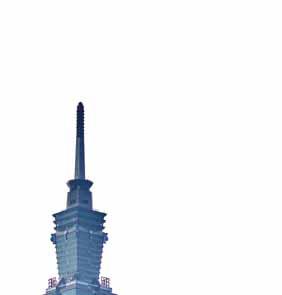
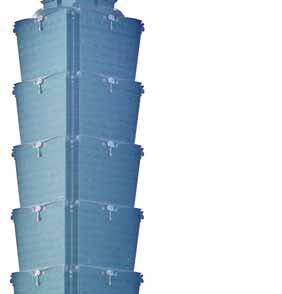
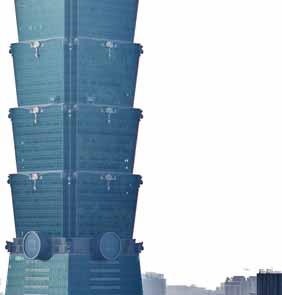
the wonders of Taipei. In the following pages, you’ll see that we’ve done exactly that. We gathered tips from nearly a dozen Rotarians and Rotaractors who are well-acquainted with the city. Our tour begins with an unlikely must-see destination that was also near the top of Schuppert’s list: the subway.
Take the MRT
In any new city, a visitor’s first order of business is to figure out the best way to get around. In Taipei, the answer to that question is the mass rapid transit system. As Rotarian and Rotaractor Julie Chu explains, the MRT is more than just a means of getting from one spot on the map to another.
Chu was born in Taipei, but she spent most of her youth living abroad. When she returned as a 25-year-old, she knew little of her native city. “I had to explore Taipei as a foreigner,” Chu explains. “I spoke the language, but a lot of things were alien to me. The MRT was how I relearned my home city.” She rode the MRT into different ethnic neighbourhoods, such as Little Manila. She rode it to the ocean in one direction and to the mountains in the other. She took it to the end of the Red Line where the Tamsui River opens into the sea so she could catch the sunset, hear live music, and walk along the coast. She took it to the Maokong Gondola, the cable car she rode up to the teahouses and plantations in the village of Maokong. The trains run underground in the city centre, but some of them travel above ground outside of downtown, giving Chu a chance to get reacquainted with the Taiwanese countryside.
Chu also appreciated the MRT for more practical reasons. Stations have special waiting zones for women riding at night, and those areas have extra security. The system also accommodates passengers with special needs: When Chu was travelling with a fellow Rotarian who had a broken leg, the MRT offered a special escort to help. As Chu and Schuppert both note, the hallmark of the MRT is its cleanliness. No eating or drinking is allowed in the stations or on the trains. Even the bathrooms are spotless — the one at the MRT station near Chu’s home boasts fresh flowers. Chu passes along a great tip: She sometimes pops into MRT stations to use the restroom, and the station attendant will often let you in for free if you say that’s all you’re there for.
The MRT is easy to navigate, with maps available in English and help desks in each station staffed by attendants who speak English. Trains are frequent and run on time. Convention goers will receive a free pass to travel on the trains as part of their convention packet, making it simple and convenient to get to the Taipei Nangang Exhibition Center, the home of the Taipei convention, which has its own MRT station.
Take an elevator up
One sight you literally cannot miss is Taipei 101, the skyscraper that dominates the city’s skyline. Named for its 101 floors, it was the tallest building in the world from 2004 until it was surpassed by Dubai’s Burj Khalifa, which was completed in 2009. At 1,667-feet-tall, it towers above the rest of the city — and nearly every Rotary member we spoke with mentioned it as an essential stop on any tour of Taipei.
Some say the tower resembles a pagoda, while others think it looks more like a stalk of bamboo. Taiwan is prone to earthquakes and typhoons, so Taipei 101 was designed to withstand a magnitude 9.0 earthquake and boasts an enormous, 728-ton tuned mass pendulum-style damper shaped like a gold ball that helps stabilise the building in high winds (the damper is visible from the 87th to 92nd floors).
The elevator ride from the fifth to the 89th floor takes only 37 seconds. There is an indoor observatory on the 89th and an outdoor one on the 91st. Last year the building management opened the 101st floor, previously reserved for VIPs, to the public; entry to the outdoor viewing platform requires wearing a safety harness. Tickets to the observatory decks are sold online or at the tower for about $20.
Before or after you visit the top floor, stop on the lower floors to shop at the high-end stores or grab a bite
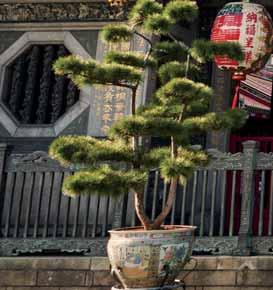
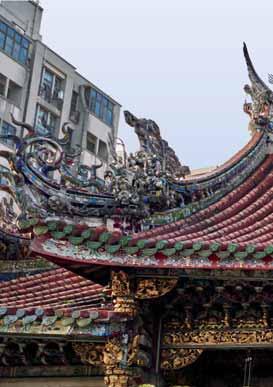
(Din Tai Fung, Taipei’s legendary dumpling house, has an outpost here; its smaller, original restaurant is on Xinyi Road). If you prefer your meal with a view, there are also restaurants on the 85th and 86th floors.
Take a hike
While a trip to the top of Taipei 101 is the best way to catch 360-degree views of the city, Rotaractor Vickie Tso likes taking in the skyline from the top of Elephant Mountain (one stop from Taipei 101 on the MRT), particularly at night. The climb to the summit involves 600 steep but well-maintained steps.
Taiwan is a mountainous island, and hiking is a popular pastime among locals. Tso also recommends Yangmingshan National Park at the northern tip of the island, easily accessible via bus, taxi or car. The park has numerous hiking trails, waterfalls, meadows of calla lilies, dense forests, and open grassy plains dotted with cows. Tso says to plan to stop for a meal or a snack while at Yangmingshan; there are cafes and restaurants in and around the park, some offering panoramic views of the city.
Rotarian Koji Fukuhara prefers to hike a smaller mountain called
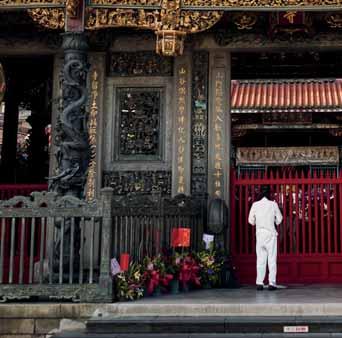
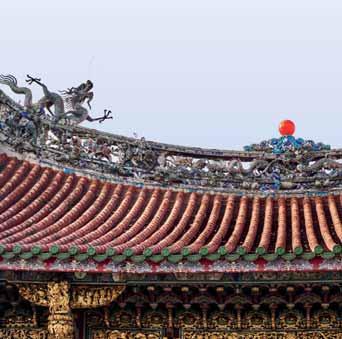
A sensory and religious experience, Lungshan Temple honours folk deities and three systems of belief. Guanyinshan, whose summit can be reached in about an hour or less. At the end of a rigorous hike, Fukuhara rewards himself at one of the restaurants near the mountain with a meal of urn chicken. A popular dish in Taiwan, it’s so named because whole chickens are basted, then roasted in clay urns, once to cook the chicken and then again at a higher temperature to crisp the skin. “It’s very juicy and salty,” Fukuhara says, “and you eat it with side dishes, soup, and beer.”
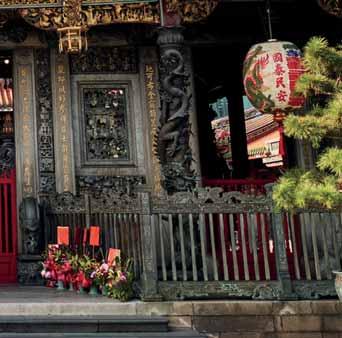
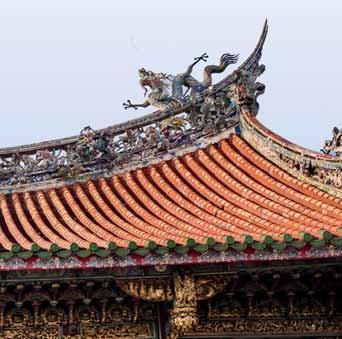
Take a Dip
The sulphur hot springs in Taipei are popular with tourists, but for locals, they
Dumplings to doughnuts A gastronomic tour of Taipei
Night markets: Raucous, energetic, and endless fun, Taipei’s night markets are a feast for the eyes and ears as well as the stomach. While food is the main draw, the markets also sell clothing, shoes, souvenirs and toys, as well as provide entertainment, such as carnival-style attractions, video games, and fortunetelling. The markets open as early as 4pm — and stay open as late as 1am. The destinations mentioned most often by our Rotary tour guides were the Shilin and Raohe night markets. The food, mostly small dishes, is casual, but that doesn’t mean it’s not first-rate: Several dozen vendors in Taipei’s night markets were recognised by the Michelin Guide in 2020.
The lines can be long at the most popular stalls — but that’s a sure way to find the best food. Some stands have tables and stools for diners, but most people eat while walking through the market (or take it to go and eat at home). The dumplings, noodles and buns will be familiar to foreigners, as will other edibles, such as fried foods and foods on sticks — though often with a Taiwanese twist, like flattened fried chicken cutlets as big as your face and skewered fried milk balls.
Try the soft, steamed white buns called gua bao, which are filled with braised pork belly; flaky savoury scallion pancakes that can also be turned into sandwiches with egg or meat; and oven-baked buns filled with juicy pepper steak. There are fresh fruit juices; papaya milk and other creamy concoctions; and, of course, bubble
Sharing hot pot is a culinary adventure — and a great way to make new friends.
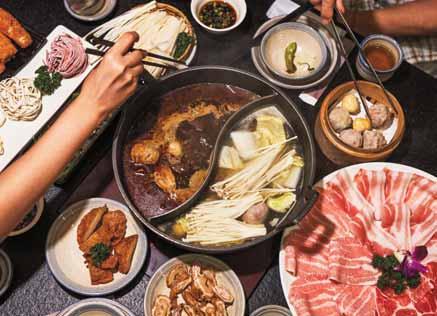
teas of all flavours filled with chewy tapioca balls. For a sweet ending, look for mochi, a sweet, chewy rice cake that is served boiled or grilled and sometimes with shaved ice.
Paul Kuo’s favourite night market food is an oyster omelette, a crispy egg pancake filled with oysters and topped with a sweet and sour sauce. Rotarian and Rotaractor Elyse (Yi-Chun) Lin recommends stinky tofu, a fermented bean curd with a strong smell that is beloved by Taiwanese people. Another unique night market dish favoured by locals is called pig blood cake, made of, yes, pig blood and sticky rice that’s formed into rectangular shapes, dipped in a pork soy broth, and rolled in peanut flour with cilantro and served on a stick. Lin describes it as a chewy, sticky, salty treat — and her absolute favourite night market delicacy. Dumplings: In Taipei, dumplings are everywhere. For the absolute best, Past District 3500 Governor Hong Shue Chen and his wife, Rita, who is also a Rotarian, recommend Din Tai Fung (Taipei has a number of locations, but expect a wait; check wait times at dintaifung.com.tw/eng). It’s famous for its xiao long bao, or soup dumplings — when you bite into one, flavourful broth seeps out of the delicate skin. Pork is the most common xiao long bao filling, but Din Tai Fung offers other variations, such as pork and crab roe or green squash and shrimp. The menu features other types of dumplings, pot stickers, and wontons as well, along with steamed buns, noodles, soups, rice dishes, vegetables, and even dessert such as xiao long bao filled with sweet red bean paste or chocolate. “If you come to Taipei and don’t go to Din Tai Fung,”
says Pauline Leung, “then you haven’t really been here.”
Hot pot: Sharing food in Taiwan is a bonding experience, and one of the best ways to do this is hot pot — typically an all-you-can-eat affair with hundreds of choices. It starts with a kettle of broth that’s kept simmering on burners at the table. Vegetables, thinly sliced meats, seafood, noodles, tofu, and dumplings arrive in separate dishes; diners make their selections and cook them in the broth, creating a flavourful soup. Diners eat straight from the pot, dipping the cooked ingredients into a variety of offerings and garnishes, such as soy sauce, sesame oil, hot sauce, peanut sauce, barbecue sauce, cilantro and garlic. Many Taiwanese like to add a raw egg. Some restaurants offer individual pots, while others feature a big communal pot, often split in half, with one side for spicy broth and the other for a milder brew. There’s a beauty to sharing hot pot. “Even if we did not know each other before, after we share hot pot we become friends,” explains Paul Kuo’s wife, Cecilia.
Breakfast: Taiwanese breakfasts can range from a sit-down meal with steamed rice and hot soup to coffee and a roll from a bakery. “Our food has so many influences from different Chinese regions, even at breakfast,” says Julie Chu. “We have buns or doughnuts from the northern part of China, and rice and porridge from the south.” Morning cuisine also shows the influence of the West: You may see pasta with black pepper sauce or even hamburgers on the menu at some breakfast joints. Chu’s favourite breakfast is dan bing, a crepe with a thin layer of egg that’s served rolled up. “You can get it anywhere, anytime; it’s fast, and you can add toppings like tuna, ham and veggies.” Another of
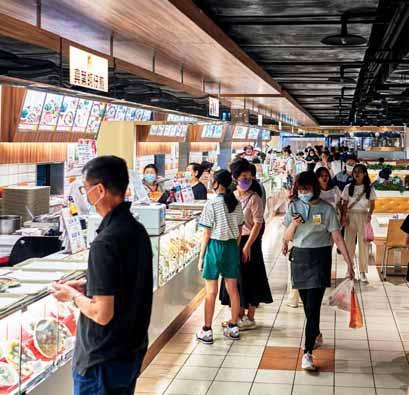
Life in Taipei revolves around eating, from pan-fried buns for breakfast to a food court meal. her favourites is a baked scallion bun, with the scallions incorporated into the dough or sprinkled on top. Finish breakfast with a cup of lightly sweetened milk tea, served hot or cold. Milk tea was the basis for the first bubble teas, which originated in Taiwan.
Food courts: That’s right: Department store food courts in Taipei are legitimate food destinations, offering groceries, packaged specialty foods, hot meals and desserts. Leung recommends heading to the Xinyi district, which has a number of high-end shopping malls with excellent food courts (including one in Taipei 101). She also says to check out Sogo, a department store chain popular in Taiwan (the food courts are on the lower level). At the Sogo location in Taipei’s Daan district, you can slurp a bowl of ramen, eat your fill of Chinese dim sum, ruin your diet with fancy cakes, or simply stop at a bakery for a bun and coffee or tea.
Convenience store food: Rotaractor Vickie Tso, a French-trained pastry chef and a graduate of the International Culinary Center in New York City, is a big fan of Taiwan’s convenience stores. She often pops into a 7-Eleven to buy postage stamps or concert tickets, send and receive packages and pay her electricity bill. But, she says, it’s also a great place to pick up breakfast, lunch, coffee, or a snack. Tso enjoys the savoury tea eggs, which have been steeped in a soy sauce and tea mixture. One of her childhood favourites is dried ramen noodles that are broken into pieces, seasoned with a flavour packet, and eaten uncooked, like crunchy chips. For breakfast she often chooses fan tuan — a sticky rice roll traditionally filled with pickled radish and greens, egg and pork — and mi jiang, a peanut-flavoured rice milk.
are a way of life. “Some of my friends like to go every day, in the morning or evening,” says Tony Chang, past governor of RI District 3500 (which has since split into districts 3501 and 3502). “It’s a social activity.”
The hot springs range from around 95 to 115 degrees Fahrenheit. Chang explains that there are springs for every preference and budget, from public bathhouses that are inexpensive or free to luxury spa resorts. Some facilities have open-air bathing, while others offer indoor pools. You can go all in with a swimsuit or merely dangle your feet in the warm water.
In Taipei, among the best known are the Beitou Hot Springs and the springs within and around Yangmingshan, which is home to dormant and active volcanoes. Chang’s favourites are about an hour from Taipei in Jiaoxi: “It’s a small town close to the eastern coast,” he says. “You can go to the open-air hot springs at the resorts and hotels there, where you will be surrounded by mountains and forests and can see the ocean. It’s very beautiful.”
Take in 7,000 years of Chinese culture
“We have so many places to go in Taipei,” says Catherine Hsieh, the wife of Yen-Shen Hsieh, past governor of RI District 3480 (which has since split into districts 3481 and 3482). “There’s the beach, the mountains — but the National Palace Museum is a treasure.”
The museum contains nearly 700,000 Chinese artifacts dating as far back as 5,000 BCE. With so many things to see, Hsieh — a member and former president of the museum’s docents association — recommends starting with the jade collection, which includes delicate carvings of animals, figurines, vases and jewellery. Its most famous piece, and arguably the most valued item in the museum, is a priceless depiction of a head of bok choy (Chinese cabbage) carved from a single piece of green and white jade and known as the Jadeite Cabbage. In a city celebrated for its food, it’s no surprise that another popular piece in the museum’s collection is a rendering of braised pork belly carved from jasper. That one is called the Meat-Shaped Stone.
The museum’s renowned bronzeware collection includes a set of bells from as early as the 13th century BCE and ritual vessels inscribed to commemorate military actions, marriages, and land grants from as far back as the ninth century BCE. You can also see the Emperor’s Treasure Chests, a collection of items for the exclusive use and entertainment of the imperial family and court; it includes an elaborately carved hollow ivory sphere with other carved spheres nestled within.
The museum also contains paintings, calligraphy and clothing, and
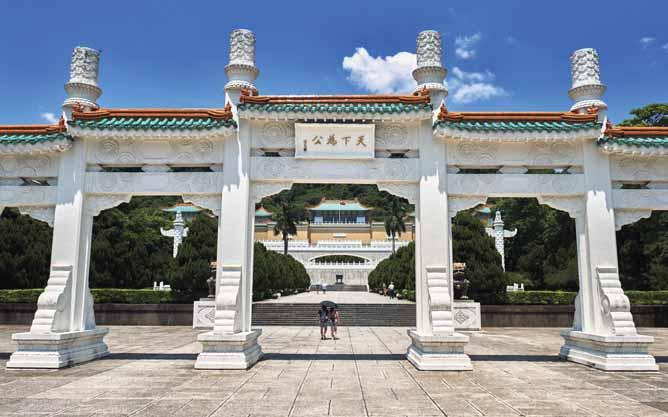
beautiful celadon and Ding ware pottery. Hsieh recommends planning for three hours to see the main attractions. There is an admission fee (about $12), but tours are free and offered in English.
Take time to act like a tourist
Though our Rotaractor and Rotarian tour guides highlighted unexpected destinations, they didn’t overlook some of Taipei’s better-known sites. Past District 3450 Governor Eric Chin, who lives in Hong Kong but visits Taiwan often, recommends a visit to Lungshan Temple. In a city dotted with temples, he says, “this one is special.” Founded in 1738, it’s one of Taipei’s oldest temples, and it acknowledges various folk deities and three belief systems: Taoism, Buddhism and Confucianism. In the courtyard, people toss red crescent-shaped pieces of wood as they seek to foretell their futures.
Inside the Lungshan Temple.
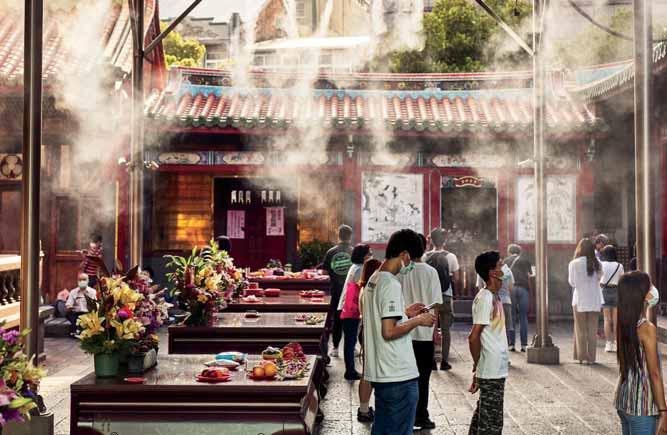
Paul Kuo, past governor of District 3522, says not to miss the Taipei Zoo, especially if you’ve brought your kids to the convention. His favourite spot is the Formosan animal area, which features animals indigenous to Taiwan. One of them, the Formosan black bear, is a symbol of pride for the Taiwanese. From the zoo, catch the gondola to Maokong, where you can enjoy scenic views and a respite from the city below.
Pauline Leung, secretary general of the Host Organisation Committee for the 2021 convention, recommends taking a stroll down Dihua Street, a historic trading district filled with markets, teahouses, art galleries and traditional architecture. The Xiahai Chenghuang (City God) Temple houses more than 600 statues of Chinese deities.
Vickie Tso recommends the bike paths along the Tamsui and Keelung rivers. Renting a bike is easy: You will find rental kiosks for the Taipei Bike Sharing System, informally known as YouBike, near MRT stations, tourist attractions, and elsewhere throughout the city. Credit cards are accepted — and renting a bike costs a mere 30 cents for 30 minutes.
In many ways, a bicycle is the ideal transport to explore Taipei and its environs. As you pedal around this vibrant city and the verdant countryside, you will see for yourself why those awestruck Portuguese sailors dubbed this unexpected apparition in the South China Sea Ilha Formosa. After five days — or more — in Taipei, feeling the energy of the Rotary convention and the city, you may even come up with a new name for this island paradise: Isle Be Back.
Ravishankar Dakoju announces four Indo-Pak Rotary projects
V Muthukumaran
Giving a big push to IndiaPakistan relations at the non-governmental level, Rtn Ravishankar Dakoju from RC Bangalore Orchards, RID 3190, who has donated `100-crore to TRF, announced four joint programmes that will promote fellowship and cultural bonding with Rotarians from our neighbouring country. Delivering his speech on Borderless World and Peace at a webinar hosted by RID 3272, Pakistan, he called for Rotarians to come together for a “peaceful planet by connecting the world instead of spending huge money on defence when it can be used for better education, healthcare and infrastructure.”
“DG Nagendra Prasad and IPDG Dr Sameer Hariani are leading me in my cross-border initiatives. I am assisted by my Rotary mentor PDG Suresh Hari, who is coordinating with PDG Mir Arif Ali from RID 3272,” said Dakoju.
On Dakoju’s suggestion to help TRF get more PHFs from Pakistan by donating points accumulated in RID 3190, PDG Suresh Hari agreed to donate points from his and his friends’ personal accounts totalling 100,000. These points can be used as matching contribution for Rotarians in RID 3272 to become PHFs, through part giving and part point transfer. “This gesture will establish a wonderful bond between the two countries, and strengthen both TRF and Rotary brotherhood,” said Dakoju.
Also, from the Paola Dakoju Ravishankar Foundation a sum of $10,000 will be donated to RID 3272 for the purchase of 100 mobile carts for selling fruits and vegetables to help Covid-affected families in Lahore and surrounding areas. “Arif Ali has prepared the list of beneficiaries and this programme will help those who have lost their jobs or are struggling due to the Covid impact,” he said.
Thirdly, his district team is making efforts to extend the stay at Gurdwara Darbar Sahib in Kartarpur for Indian pilgrims in the morning and evening, so that “Rotarians have an opportunity to interact more with their counterparts in Pakistan.” At present, there are restrictions in the number of Indian pilgrims visiting the Sikh temple in a day and they are allowed to stay there only for specified hours.
A Rotary peace rally is slated on October 24 to proceed from Bengaluru to Amritsar and then reach the border for exchanging flags and ideas with Pakistani Rotarians. DG Prasad is coordinating with RID 3272 and also Indian officials for undertaking the peace rally without any hitch. Recalling his boyhood days, Ravishankar said, “I used to sleep when other students were taking notes in the class and failed in Class 10 exams three times, before passing with a bare minimum of 32 per cent.”
But he used to dream big, “I even dreamt of climbing Mount Everest, but ended up climbing a mountain. But I see many people on foothills as they don’t have the ability to dream big. Without dreaming, I would be a dead man.”
For Ravishankar, religion is “something very personal and though born a Hindu, I married Paola Rodriguez, a Roman Catholic, and feel blessed. I pray to God that I can marry her in my next birth too.” His philosophy is Sarva dharma samanatva (give respect to all religions) as “I live in a multireligious house and till now, there is no argument or fight among us. On the contrary, we enjoy celebrating different festivals.” Citing Vinoba Bhave, he said the concept of nation states is outdated as “we will be moving towards a borderless state.” He decried the huge amount of spending on defence, “around 15.5 per cent of our GDP, when resources are scarce,” and can be better used for improving our living conditions. “I feel ashamed that in the name of country, we fight and kill each

other. Is this civilisation, when we are no better than animals?”
Zakat, the father of CSR
While India passed the CSR Act in April 2014 and Pakistan followed suit in May 2017, making it compulsory for companies to allot at least two per cent of their annual profits to charity and philanthropic activities, Zakat, a 1,400 year-old edict in Islam, orders Muslims to donate 2.5 per cent of their annual wealth for noble causes. “This Zakat obligation purifies the heart and soul and has socio-economic benefits for mankind,” said Ravishankar. In a way, what Zakat does for Muslims, the Rotary Foundation does for Rotarians, by urging them to give a small percentage of their wealth for community welfare projects, he said.
Rotary SAARC webinar
At the peace webinar on the topic ‘United South Asia for better future’ hosted by RC Aurangabad Metro, RID 3132, DG Harish Motwani called upon Rotary leaders “to develop a system for countries in this region to come together at the non-governmental
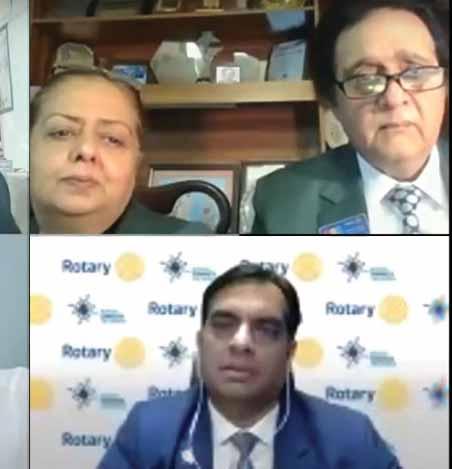
In a way, what Zakat does for
Muslims, the Rotary Foundation does
for Rotarians, by urging them to give
a small percentage of their wealth for
community welfare projects.
level.” With over 1.75 lakh Rotarians from 4,850 clubs and having large resources and knowledge, “we can change the entire scenario in South Asia,” he said. With polio almost being eradicated, people have developed faith in Rotary and “this SAARC peace conference fulfils one of the main objectives of International Service of Rotary, that is, peace building and conflict resolution.”
He emphasised taking up RYE, New Generation Service Exchange and Rotary Friendship Exchange among SAARC countries to promote mutual trust and goodwill. DG Dr Farhan Essa Abdullah, RID 3271, said “there is a need to clear the misconceptions about Pakistan as we are peace-loving people and I invite Rotarians to stay as our guests, enjoy our hospitality and take back fond memories of your stay here.” Regional cooperation, trade and medical exchange programmes will build bridges of friendship and trust among South Asian neighbours, said Abdullah. PDG Jesudasan, RID 3120, from Sri Lanka, said the 1.8 billion people from South Asia, constituting 23 per cent of world
Clockwise from top left:
DG Tazeem Ahmad, RID 3272, PDG Mir Arif Ali, IPDG Sameer Hariani, RID 3190 and Rtn Ravishankar Dakoju and his wife Paola. population, have only 4.3 per cent of global GDP. “Since independence, the countries are beset with different kinds of conflict, either at war with each other, civil strife or community unrest due to religion, caste or ethnicity,” he said.
Addressing the meet, PDGs Tirtha Man Sakya and Keshav Kunwar, RID 3292, stressed on the need for South Asians to promote global peace through cultural exchange and mutual cooperation. “We need an understanding to implement giant community projects that will meet the basic needs of hunger, healthcare, education and development goals,” said Sakya. Listing out areas of cooperation, PDG Salim Reza, RID 3281, from Bangladesh said cultural outreach, a SAARC sports meet for Rotarians, WinS programmes and medical missions are some of the Rotary projects that will unite the people of the subcontinent.
Free trade, the key
Echoing the views of Reza, PDG Alok Billore, RID 3131, said, “we are at a sad state of affairs as superpowers sell their arms in a cut-throat competition which results in geopolitical tension and rivalry. Rotarians as peace brokers and goodwill ambassadors can prevent conflicts.” South Asian Free Trade Area, SAFTA in short, is a good concept that will promote trade and commerce between countries. Billore mooted the idea of RSAARC (R for Rotary) through which Rotarians can have an annual summit for exchange of ideas for joint projects. “A SAARC platform for Rotarians will strive to promote peace in the region, encourage trade and build a strong bond of fellowship across borders,” he said.
Around 500 Rotarians and Rotaractors from India, Pakistan, Nepal, Sri Lanka and Bangladesh took part in the webinar moderated by Chandrakant Chaudhari, past president, RC Aurangabad Metro.







